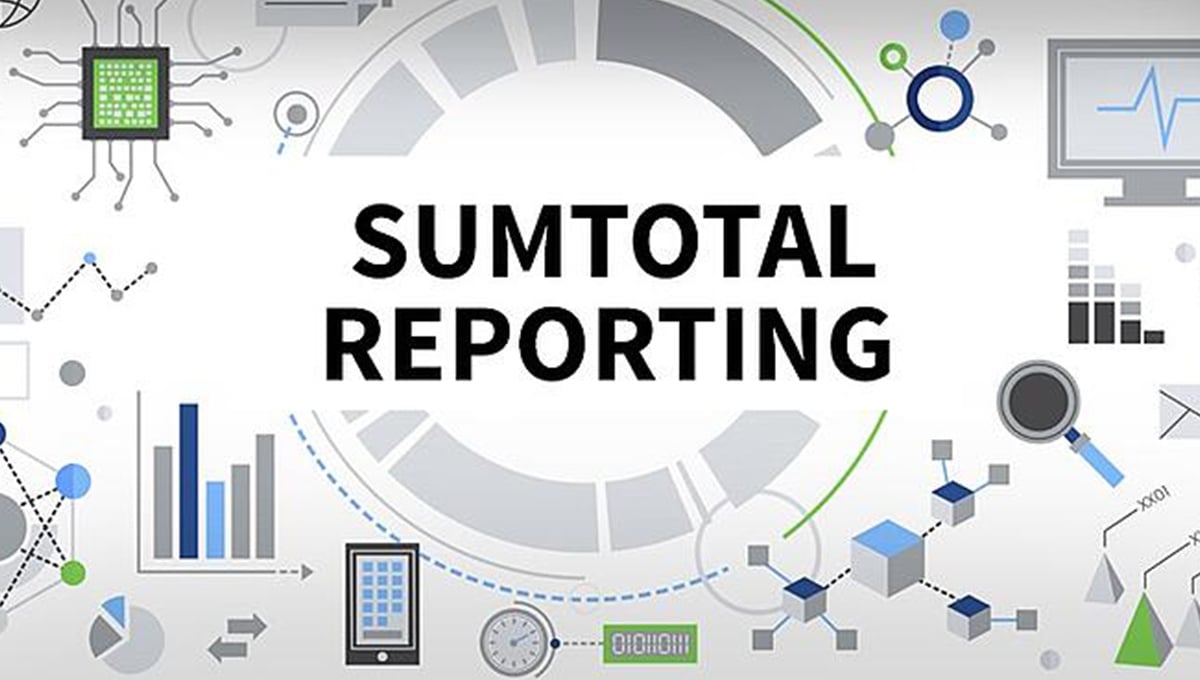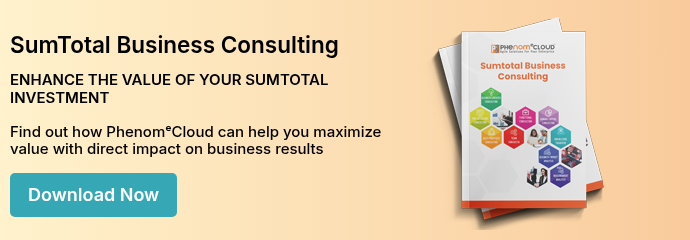
SumTotal Advanced Reporting is a secure, robust, and flexible reporting tool that enables us to deliver the right information about learning and development to anyone who needs it. The Winter 2016 release was a big step forward in bringing useful analytics closer to ordinary business users.
Users have told us that reporting is the most frustrating feature in their LMS. Our experience teaches us that the user experience depends on how well administrators manage the reporting functions and tools.
In a previous article about standardization and governance, we discussed the foundation for well-structured reporting management. Let us summarize those recommendations before we move on to our tips on ad hoc reporting.
- Organizations of every size in today’s connected world of data streams require a comprehensive data governance policy. If you don’t have a Chief Data Officer or similar role, a network of data stewards, and a structured system, we urge you to get started. The Data Governance Institute is an excellent information source, or you can contact us if you need help getting started.
- One function of a data governance body is to create and maintain standards in reports management. Start with a well-structured taxonomy of naming rules to make it easy for people to find what they need. Lists of incomprehensible names is a fast way to make them hate your learning management system.
Tips for Managing Ad Hoc Views
SumTotal delivers a large group of reports that meet most of your standard reporting needs. As your ability to use information grows, so will your appetite for more refined reporting. Ad hoc views make that refinement possible. If you are like most customers, you will develop a comprehensive library of reports based on your ad hoc views.
The training available at SumTotal Connect will get you started. We want to provide some additional tips to make your ad hoc views and reporting even more useful. Our tips will also help you avoid the pitfalls that await the unwary.
- Limit the number of report writers to as few people as practical. The lower the number of report creators, the easier it will be to maintain your standards. Some of us learned this early in our careers.
- Don’t let administrators work in isolation. Set aside time for them to share their knowledge and ideas. Your administrators should be well connected to your data governance team.
- Don’t spend your time searching for data you already have. Each of the delivered domains in your instance contains comprehensive information. Learn what is in each of the delivered domains, and make sure every report writer has a handy reference. The SumTotal Platform Data Dictionary will be helpful as a resource.
- Create custom domains when you need them. As your analytics ability grows, you will compare data sets in ways that are not available in the delivered domains. You will also create the need for new data sets.
- Use topics to make your views easy for others to find. Domain names are too broad to be useful when you have dozens or hundreds of views and reports in your libraries. Develop a taxonomy of Domains and Topics and enforce your standards.
- Use descriptions in all your views and reports to tell other users exactly what they contain. Work with other administrators to standardize how you use report descriptions. It’s easy to get in a hurry and skip that step, but the time you save now will cause time and frustration for yourself and others when you create views that already exist.
- Start with the end user in mind and keep it simple. Keep their skill and knowledge level in mind and take the time to understand and visualize how they will use the information. Think of the story you want the data to tell your end user. Change field names if the provided name is not familiar to your users.
- Use available training. Every time you learn something new, take the time to apply the knowledge immediately and share your experience with other Administrators.
- Study calculated field functions. There may be features you will never use, but it will be helpful to know they exist when you need them.
We hope these tips help you manage your views and reports in ways that will delight your end users. In our next article, we will explore the means to make your reports more useful.
PhenomᵉCloud is a comprehensive technology solutions provider committed to empowering businesses to overcome challenges, enhance their workforce capabilities, and achieve superior outcomes.


Leave a Comment